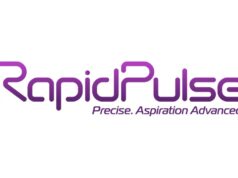
With the original trial demonstrating a higher incidence of substantial reperfusion with tenecteplase compared with alteplase prior to endovascular therapy, EXTEND-IA TNK Part 2 sought to investigate the optimal dose. The investigators, Bruce CV Campbell and colleagues from Royal Melbourne Hospital, Melbourne, Australia, set out to determine whether 0.4mg/kg of tenecteplase safely improves reperfusion versus 0.25mg/kg in patients with large vessel occlusion (LVO) ischaemic stroke. The findings have now been published in Journal of American Medical Association (JAMA).
Through orchestrating a multicentre, prospective, randomised, open-label, blinded endpoint (PROBE) controlled phase 2 trial at 27 hospitals in Australia and one in New Zealand, the investigators found that the higher dose of tenecteplase did not significantly improve cerebral reperfusion prior to endovascular therapy. “The 0.4mg/kg dose confers no advantage,” Campbell and team write.
Of the 300 patients (mean age: 72.7 years; 47% women) who were randomised, 29 (19.3%) of the 150 in each cohort achieved the primary outcome: reperfusion greater than 50% of the involved ischaemic territory. The authors highlighted that these were assessed through consensus of two blinded neuroradiologists.
In terms of secondary outcomes, no significant differences in functional outcomes were elicited between the 0.4mg/kg and the 0.25mg/kg dose groups. All-cause deaths (17% vs. 15%) and symptomatic intracranial haemorrhage (4.7% vs. 1.3%) were also found to be similar between 0.4mg/kg and 0.25mg/kg groups, respectively, with no statistically significant differences observed.
Patients were enrolled between December 2017 to July 2019, with follow-up until October 2019. Each patient had ischaemic stroke caused by occlusion of the intracranial internal carotid, basilar, or middle cerebral artery and were treated <4.5 hours after symptom onset using standard intravenous thrombolysis eligibility criteria. Open-label tenecteplase at 0.40 mg/kg or 0.25 mg/kg was given as a bolus before endovascular thrombectomy.
Discussing the current findings, Campbell and colleagues acknowledge that pooled analysis with the original trial data confirmed the higher incidence of substantial reperfusion associated with tenecteplase versus alteplase. They point to the inclusion of rural patients (n=41) as a “unique feature” of the current trial, which were largely recruited through telemedicine.
“The longer time between thrombolysis and arterial puncture in the rural stratum was associated with a significantly higher rate of reperfusion prior to thrombectomy, compared with metropolitan and mobile stroke unit patients,” they add.
Lastly, Campbell et al affirm: “To our knowledge, this study is the first substantial head-to-head comparison of two candidate doses of tenecteplase for ischaemic stroke. The decision of whether to use alteplase or tenecteplase as the optimal first-line thrombolytic for stroke will be guided by results of ongoing head-to-head trials.”
These trials include: AcT (Alteplase compared to tenecteplase in patients with acute ischaemic stroke), which is currently underway in Calgary, TASTE (Tenecteplase versus alteplase for stroke thrombolysis evaluation), ATTEST2 (Alteplase-tenecteplase trial evaluation for stroke thrombolysis), and NORTEST2 (The Norwegian tenecteplase stroke trial 2).













